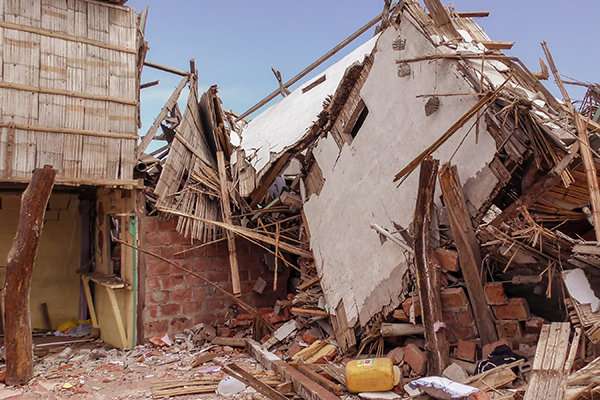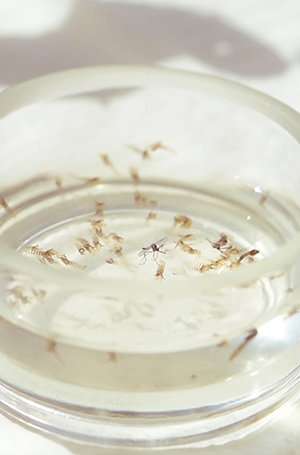Public health research seeks to understand how natural disasters impact spread of Zika

On April 16, 2016, a 7.8 magnitude earthquake rocked the South American country of Ecuador. It was the most severe seismic event in nearly 40 years – killing roughly 700 people and displacing more than 70,000.
In the weeks and months that followed, tens-of-thousands of survivors sought access to shelter, food and clean water, with thousands of emergency personnel assisting in rescue and relief efforts across the country. But along with the visible devastation facing those throughout the affected region, another big, but not so obvious problem was quickly spreading.
A new study from researchers at the University of South Florida (USF) College of Public Health shows an alarming connection between this natural disaster and the number of Zika cases in Ecuador. The article, "Post-earthquake Zika virus surge: Disaster and public health threat amid climatic conduciveness," published last month in Scientific Reports, outlines the explosion of Zika and provides insight into how these disasters can have hidden costs.
"There was clearly a significant increase in the number of Zika cases after the earthquake," said Miguel Reina Ortiz, Ph.D., assistant professor in the Department of Global Health. "We also saw that the areas that were most severely affected by the earthquake had the biggest increase in the number of cases of Zika."
Reina, along with co-principal investigators Associate Professor Ricardo Izurieta, Ph.D., and Assistant Professor Ismael Hoare, Ph.D., collected and analyzed data from Ecuador's Ministry of Public Health 18 weeks before and after the earthquake. The researchers also incorporated data from numerous sources encompassing earthquake impact, climatic variability and socio-economic factors. They found that the number of Zika cases were 34 times higher after the quake in the most severely impacted regions. In comparison, those areas that were mildly impacted saw their rates of disease nearly double.
"When we see any natural disasters hit, we become intensely focused on helping those affected by the physical impact, such as rescuing people in damaged buildings. That is the priority," said Hoare. "But, other ancillary programs, like vector control, may not receive similar attention. This data shows the need for those programs is also very important."

Researchers say while they did not specifically look at the physical conditions that led to the rise in Zika, they are able to make informed hypotheses as to why the explosion occurred. The team points identified structural damage and disruption in water services leading to an accumulation of standing water that favors the breeding of mosquitoes that spread the disease. They also say damage to homes, which might force people to spend more time outdoors, leaves people at a higher risk of exposure to the vectors.
"When there is a disruption in the ecology and infrastructure, these diseases that may not be seen as endemic can suddenly arise," Izurieta said. "It's important that we use this data to inform our decision making before and after disasters occur."
While the study did directly examine the events in Ecuador, researchers believe it can also shed light on the potential risk other regions around the world face, including Florida. Hurricanes, for example, can create similar environmental conditions to what was seen after the earthquake. And, because of Florida's tropical climate and weather conditions, experts say the emergence of viruses here is possible.
In fact, this year, the Centers for Disease Control and Prevention reported nearly 100 new cases of Zika in Florida. USF researchers say the state's vector control system, which is one of the best the country, has been successful in keeping the spread of the disease to a minimum. They warn, however, that in the event of a severe natural disaster, an increase in cases is possible, especially if locally transmitted cases are reported right before the disaster.
"For that reason, the message is that a disaster like an earthquake or hurricane can disrupt, not only the environmental and infrastructure conditions, but also place populations at higher risk to acquire all sorts of diseases," said Izurieta.
Through this research, the USF team has developed a statistical model they hope to apply to other areas experiencing a variety of disasters. The hope is to build a diverse understanding of the issue to be able to better inform policy makers of the importance of maintaining vector control initiatives when disasters strike.
More information: Miguel Reina Ortiz et al. Post-earthquake Zika virus surge: Disaster and public health threat amid climatic conduciveness, Scientific Reports (2017). DOI: 10.1038/s41598-017-15706-w


















